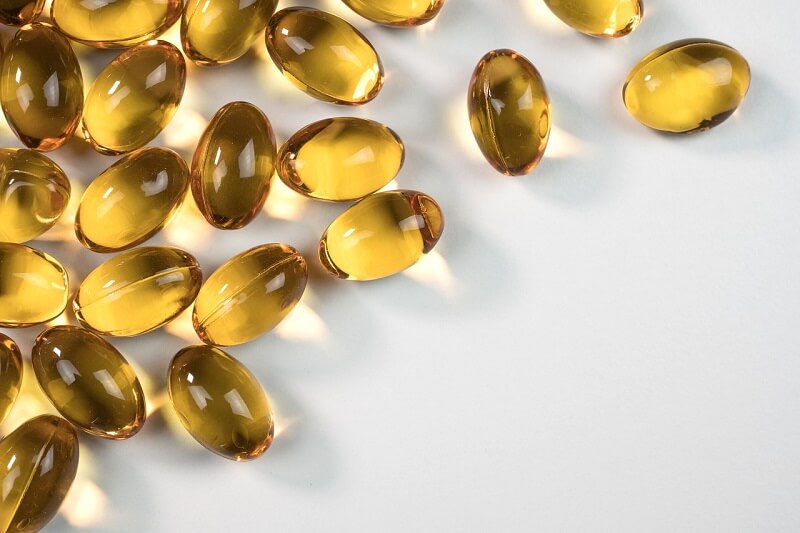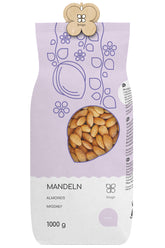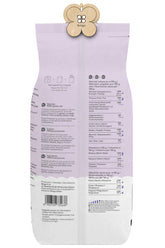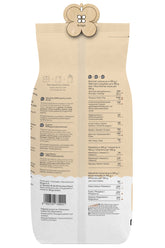Vitamines liposolubles : présence et propriétés
CONTENU
- Que sont les vitamines ?
- Vitamines liposolubles
- Vitamine A - Propriétés et présence
- Effets de l'hypo- et de l'hypervitaminose de la vitamine A
- Vitamine D - Propriétés et présence
- Effets de l'hypo- et de l'hypervitaminose de la vitamine D
- Vitamine E - Propriétés et présence
- Effets de l'hypo- et de l'hypervitaminose de la vitamine E
- Vitamine K - Propriétés et présence
- Effets de l'hypo- et de l'hypervitaminose, vitamine K
- Résumé
Les vitamines ont été découvertes par notre compatriote Kazimierz Funk. Parmi leur multitude, on trouve des composés hydrosolubles et liposolubles. Aujourd’hui, nous nous concentrons sur les vitamines liposolubles. Pourquoi sont-ils si importants pour notre santé ? Peut-on en faire une overdose et où peut-on les trouver ? Nous allons essayer de répondre à ces questions et à d’autres.
Que sont les vitamines ?
La première vitamine a été découverte au début du 20e siècle par le biochimiste polonais Kazimierz Funk. L'ingrédient qu'il a appelé ainsi était extrait du son de riz, et c'était de la thiamine ou vitamine B1. Un an après cette découverte, Funk combina les mots latins vita, signifiant vie, et amine, signifiant un composé chimique contenant un groupe amino, et ainsi naquit le mot bien connu vitamine. Les vitamines sont des composés organiques de faible poids moléculaire dont la présence dans l’organisme en petites quantités est nécessaire au bon fonctionnement de nombreux processus métaboliques. Pour de nombreux organismes, y compris les animaux et les humains, ces composés sont exogènes et doivent être fournis ou complétés par l’alimentation. La classification de base des vitamines est basée sur leur solubilité. Il existe des composés hydrosolubles et des composés liposolubles. Ceci est important pour leur bonne absorption.
Vitamines liposolubles
On ne peut distinguer que quatre vitamines liposolubles. Ce sont : les vitamines A, D, E et K. Pour leur bonne assimilation avec les aliments, la présence de graisses dans lesquelles elles sont solubles est nécessaire. Contrairement aux vitamines hydrosolubles, elles sont beaucoup plus stables. Cela signifie que leurs pertes lors du traitement thermique des aliments sont négligeables par rapport aux précédentes. Un bon exemple est la vitamine C, qui est décomposée pendant la cuisson, par exemple. De plus, c'est grâce à cette propriété qu'il est beaucoup plus facile de faire un surdosage. Il faut cependant se rappeler qu’un tel état est pratiquement impossible à atteindre à l’aide de la nourriture. Le plus souvent, cela se produit avec une utilisation excessive de toutes sortes de suppléments de ces vitamines. Contrairement aux vitamines hydrosolubles, leur excès ne peut pas être excrété régulièrement dans l’urine et est stocké dans l’organisme. Soyez donc prudent lorsque vous les ajoutez.
Vitamine A - Propriétés et présence
La vitamine A est un terme qui désigne plusieurs composés chimiques appartenant au groupe des caroténoïdes, notamment le rétinol et ses dérivés et le bêta-carotène. Le rétinol est considéré comme la substance la plus importante – c’est pourquoi les noms de vitamine A et de rétinol sont parfois utilisés comme synonymes. La vitamine A joue de nombreux rôles clés dans notre corps. Il influence le processus visuel et est responsable de l’état des cheveux, de la peau et des ongles. De plus, il renforce le système immunitaire, influence la vitesse de cicatrisation des plaies et régule la croissance du tissu épithélial et d’autres cellules du corps. Il augmente également la capacité de régénération des cellules. De plus, il possède des propriétés anticancéreuses : il réduit le risque ou ralentit le développement du cancer du côlon, du sein, du poumon et de la prostate.
Les sources précieuses de vitamine A sont le beurre, les œufs, le lait et autres produits laitiers, certains poissons gras, le foie et les abats animaux, les patates douces, le chou frisé, le cresson, les épinards, la citrouille et la propolis. Les caroténoïdes importants pour la santé, dont le bêta-carotène, se trouvent dans les légumes comme les épinards, les carottes, les tomates, les poivrons et la laitue, ainsi que dans les fruits comme les cerises, les abricots, les pêches et les prunes.
Effets de l'hypo- et de l'hypervitaminose de la vitamine A
Les personnes âgées, les travailleurs informatiques, les femmes enceintes, les alcooliques et les fumeurs sont particulièrement exposés au risque de carence en vitamine A. Vous pourriez être préoccupé par la cécité nocturne, la sécheresse conjonctivale et la diarrhée. De plus, l’immunité et l’état de la peau, des cheveux et des ongles sont réduits.
Cependant, une hyperactivité et une irritabilité peuvent survenir en cas d’hypervitaminose. Tout comme les douleurs musculaires, crâniennes et articulaires. Il peut également y avoir une photophobie, une perte de cheveux et même une détérioration de la fonction du foie ou de la rate.
Vitamine D - Propriétés et présence
La vitamine D est souvent associée à la prévention du rachitisme et de l’ostéoporose. Peu de gens savent qu’il peut également prévenir le développement de la dépression et du diabète. La vitamine D est classée comme une vitamine, mais de nombreux scientifiques pensent qu’elle agit davantage comme une hormone. On sait aujourd’hui que la vitamine D est si importante pour l’organisme que sans la quantité adéquate, il est difficile d’atteindre une santé et une forme physique complètes. Il intervient dans les processus d'absorption du calcium et du phosphore, mais participe également au métabolisme efficace et régule le travail des neurones. Il régule le sommeil, est responsable de sa durée et du système jour-nuit. Il peut augmenter considérablement le nombre de spermatozoïdes. Elle affecte également la fonction musculaire, l’immunité et la production de globules rouges.
Nous l’associons généralement au soleil. Et à juste titre, car c’est en quelque sorte sa principale source. Notre corps synthétise la vitamine D avec l’aide de la lumière du soleil. C’est pourquoi il est si important de le compléter en automne et en hiver. On le retrouve naturellement dans les poissons gras, les œufs et les produits laitiers.
Effets de l'hypo- et de l'hypervitaminose de la vitamine D
Un manque de vitamine D dans l’organisme peut provoquer des douleurs osseuses et musculaires. De plus, leur résistance aux dommages mécaniques diminue. Une diarrhée, une perte d’appétit, une hypertension artérielle et une fatigue rapide peuvent également survenir.
En revanche, dans la situation inverse, c'est-à-dire l'hypervitaminose, elle peut s'accompagner d'une perte d'appétit, de maux de tête et de douleurs abdominales. Des nausées, une transpiration excessive et une soif accrue peuvent également survenir.
Vitamine E - Propriétés et présence
Ce n’est pas sans raison que la vitamine E est également appelée la vitamine de la jeunesse. La vitamine E est le terme collectif désignant un groupe de composés liposolubles dotés de propriétés antioxydantes caractéristiques. Il retarde le processus de vieillissement de la peau, la nourrit, l'hydrate, la régénère et la lubrifie, améliorant visiblement son état - c'est pour cette raison qu'il est inclus dans de nombreux cosmétiques de soin du visage, en particulier ceux aux propriétés anti-rides. C'est un puissant antioxydant qui régule également la fonction immunitaire du corps. Il prévient l’artériosclérose en réduisant le « mauvais » cholestérol (LDL) et en augmentant simultanément le « bon » cholestérol (HDL). La vitamine E peut aider à réduire le risque de développer des maladies neurodégénératives telles que la maladie de Parkinson ou la maladie d’Alzheimer. Il convient également de noter que la Vit. La vitamine E est un élément précieux de l’alimentation des femmes enceintes et affecte le bon développement de la vision et du système nerveux du fœtus.
Les aliments d'origine animale et végétale sont riches en vitamine E. Les produits végétaux caractérisés par une teneur élevée en vitamine E sont principalement l'huile d'olive, les amandes, l'huile de tournesol, les noisettes, les germes et les germes de céréales. On trouve également de grandes quantités de tocophérols dans les tomates, le brocoli, les choux de Bruxelles, les épinards, les pêches et les cassis. On le retrouve également dans les poissons gras, les œufs, le lait et les conserves.
Effets de l'hypo- et de l'hypervitaminose de la vitamine E
Les principaux symptômes d’une carence en vitamine E comprennent des symptômes systémiques tels que des difficultés de concentration et de la fatigue. D’autres symptômes caractéristiques incluent une détérioration de la vision, un dysfonctionnement musculaire, une perte de cheveux, une immunité réduite, une anémie et même l’infertilité.
La vitamine E est stockée dans le tissu adipeux et les glandes surrénales, et son excès est naturellement éliminé du corps au cours du processus métabolique. Un excès de vitamine E est défini comme une dose quotidienne de 1 000 mg ou plus. Des maux de tête, une faiblesse physique, des problèmes intestinaux et une diminution de la force musculaire peuvent survenir.
Vitamine K - Propriétés et présence
La fonction principale de la vitamine K est de participer à la synthèse de la prothrombine et des facteurs de coagulation sanguine et de maintenir un bon équilibre calcique dans l’organisme. Des rapports suggèrent également un lien entre une carence en vitamine K et le risque de cancer ou de maladies cardiovasculaires et cardiaques. Avec la vitamine D et le calcium, la vitamine K joue un rôle important dans le maintien d’une bonne condition osseuse et prévient, par exemple, la perte osseuse. Ostéoporose.
Les sources les plus riches en vitamine K sont les légumes verts qui contiennent beaucoup de chlorophylle, notamment : le brocoli, le chou frisé, les épinards, les choux de Bruxelles, la laitue romaine, la laitue iceberg, la roquette, la mâche, le chou frisé et les asperges. De plus petites quantités de cette vitamine se trouvent également dans les produits d’origine animale. Il s’agit notamment du foie, des œufs et des produits laitiers.
Effets de l'hypo- et de l'hypervitaminose, vitamine K
La carence en vitamine K chez l’adulte est relativement rare. Une part importante des besoins quotidiens en cette substance est couverte par la flore intestinale. Néanmoins, une carence chronique en vitamine K peut entraîner le développement d’ostéoporose, d’anémie, d’artériosclérose, de troubles de la coagulation sanguine, d’ictère et de lésions hépatiques.
En cas d’hypervitaminose, les globules rouges peuvent être dégradés, entraînant une anémie. Une inflammation intestinale et une jaunisse peuvent également survenir. Les enfants et les nourrissons sont particulièrement à risque.
Résumé
Les vitamines liposolubles sont vitales pour notre corps. Ils régulent tellement de processus qu’il est très important de les approvisionner régulièrement. Il faut néanmoins faire attention au dosage lors de la supplémentation. Contrairement aux vitamines hydrosolubles, leur élimination du corps est beaucoup plus difficile. Si nous envisageons de les compléter, nous devons soigneusement ajuster le dosage à nos besoins et parfois consulter un médecin.
LE CHOIX DE L'ÉDITEUR
Amandes 1 kg BIOGO
- £11.00
£13.00- £11.00
- Prix unitaire
- / par
Noix 800 g BIOGO
- £8.00
£10.00- £8.00
- Prix unitaire
- / par
Mangue séchée bio 400 g BIOGO
- £10.00
- £10.00
- Prix unitaire
- / par
Mûres blanches séchées 500 g BIO
- £6.00
£7.00- £6.00
- Prix unitaire
- / par
Figues séchées bio 800 g BIOGO
- £27.00
- £27.00
- Prix unitaire
- / par
Gruau de sarrasin non décortiqué 1 kg BIOGO
- £3.00
£3.00- £3.00
- Prix unitaire
- / par
Noix de coco râpée bio 500 g BIOGO
- £9.00
- £9.00
- Prix unitaire
- / par
Flocons d'avoine bio 600 g BIOGO
- £4.00
- £4.00
- Prix unitaire
- / par
Noix de cajou bio 1 kg BIOGO
- £18.00
- £18.00
- Prix unitaire
- / par
Graines de chardon-Marie 1 kg BIOGO
- £4.00
- £4.00
- Prix unitaire
- / par









































































































































